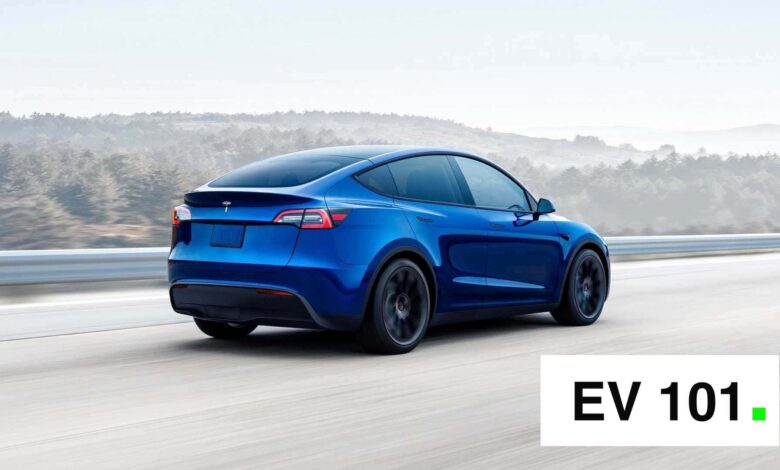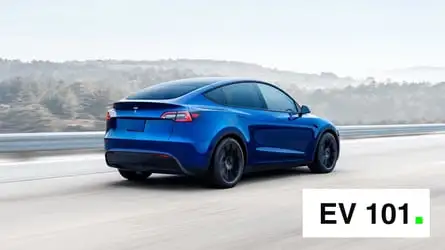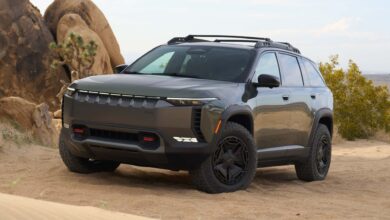Thinking Of Buying An Electric Car? Here Are Five Critical Things To Consider

Range is one of them and so is your charging situation, but there are a few more things to consider before buying an EV.

While they still account for a slim percentage of the new-vehicle market in the U.S., sales of electric cars, led by the top-selling Tesla Model Y, are rising steadily. And with several new models constantly coming out and additional off-lease electric cars headed to used-vehicle lots, 2024 could be the year you take the proverbial plunge and buy an electric car. But shopping for a battery-powered vehicle is a somewhat different process than it is with a conventional gas-fueled model. Here are five prime variables to consider when buying either a new or used electric car.:
Ensure That The Electric Car’s Range Fits Your Needs
This is arguably an electric car shopper’s most important concern. Today’s electric cars cover a wide range in this regard, with driving capacities ranging from around 100 miles to more than 500 miles, with the sweet spot being the 250- to 300-mile range. Do you even need that much?
It pays to pick a model with an operating range that exceeds your expected needs, and here’s why: Estimated ranges for electric cars are just that – estimated – and will vary based on several factors. For starters, you’ll drain the battery quicker while driving on the highway than around town. It takes more energy to propel an electric car at higher speeds.
Also, you’ll burn more kilowatts of power driving in extreme temperatures. Research conducted by AAA found that when the mercury dips to 20°F and the vehicle’s heater is in use, an average electric car’s range will be 41 percent shorter than when the mercury is at 70°F. When the thermometer hits 90°F, an electric car’s range drops by an average of 17 percent with the air conditioning running. And you’ll want to be prepared for the possibility that you may take on a new job that requires a longer commute at some point during your ownership period.
Consider The Prices And Any Available Incentives And Tax Credits
Next to an electric car’s operating range, sticker price is the next most important consideration. The least expensive electric cars for 2024 are priced around the $30,000 range, though some luxury-minded models fetch well over $100,000.
You should buy or lease an electric car well within your financial reach. Always research prices for any vehicles you’re considering, including options, via an Internet source like Kelley Blue Book (kbb.com) or NADAGuides.com to see what you can afford. Also, consider the manufacturer’s mandatory delivery charge, registration costs, and state and local taxes that will be tacked onto the vehicle’s transaction price.
Remember that some electric cars sold in the U.S. are eligible for a one-time $7,500 federal tax rebate that effectively cuts the price by that amount. On the other hand, those who lease an electric car can usually get the full benefit of this incentive immediately, as the credit is usually wrapped into the deal, with the leasing company being the owner of record. Several states offer their own tax breaks or cash rebates to help promote electric car sales.
If you’re on a tight budget, consider choosing a used model. With the exception of just a few models, which hold onto their resale values well, electric cars are incredibly affordable in the pre-owned market. They tend to have below-average resale values because of the aforementioned federal tax rebate, still limited demand, and other factors. The trade-off is that most three-year-old or older electric cars tend to deliver fewer miles on a charge than many of the latest models.
Ensure That It’s The Vehicle You Want
Aside from paying attention to an electric car’s price and range, you’ll want to choose a model you can live with as a daily driver. For example, a subcompact model’s interior may be too cramped for taller motorists. Some electric cars are inherently easy to enter and exit for some drivers than others. Back seat leg and headroom would be a concern if you regularly carry multiple passengers. If you have small children, you’ll want to determine how easy or difficult it might be to get them in and out of their car seats.
You’ll also want to make sure the cargo room in the trunk (if it’s a sedan) or behind the back seats (if it’s a hatchback or crossover sport-utility vehicle) can hold a sufficient number of grocery bags or cover your typical warehouse-store purchases. Also, check the cargo volume with the rear seatbacks folded flat, and note how easy or difficult it is to load and unload bulky items.
Basically, don’t just go for any electric car because you want to drive electric. Pick an electric car that actually suits your wants and needs.
Make Sure You Understand And Enjoy The Electric Car Driving Experience
No matter what type of vehicle you’re looking for, new or used, gas or electric, you’ll want to take a thorough test drive before signing a bill of sale. It’s essential to ensure the vehicle is acceptably comfortable, with all accessories easily operated and in good working order. Importantly, those who have never driven an electric car will notice that there’s a somewhat different driving experience involved.
Since there’s no engine or exhaust, an electric car is whisper quiet, which can be off-putting to some motorists. An electric car immediately delivers 100 percent of its available power, making higher-powered models feel twitchy until you learn how to modulate the accelerator.
Electric cars typically use one-speed transmissions, so there’s no sensation of gearshifts. Also, the vehicle’s regenerative braking function, which helps recover energy that would otherwise be lost through decelerating and braking, can be quite pronounced depending on the model. What amounts to a high level of engine braking may feel unnatural. Some electric cars allow the driver to choose more or less regenerative braking as desired and even enable so-called “one pedal” driving that will bring the car to a complete stop without using the brake pedal.
Consider Your Charging Options
Even if you have a standard power outlet in your garage, you’ll want to spend the money to have an electrician install a 240-volt line and perhaps a wall-mounted charger to take advantage of quicker “Level 2” charging times. While it can take 24 hours or more to fully charge a given battery-powered vehicle on house current (Level 1), most models can reach full capacity overnight via a Level 2 circuit. Check with your local utility company to see if they offer a discount for electricity during off-peak hours.
You’ll also want to note where public charging stations are located near where you live, work, and shop in case your car is running low on kilowatts while away from home. Look for “Level 3” DC Fast Charge installations that can bring an electric car’s battery pack up to 80 percent of its capacity in as little as 15 minutes, depending on the vehicle. However, public charging is neither as convenient nor economical as home charging.
Read more



